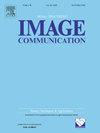CT-PCQA: A Convolutional Neural Network and Transformer combined Method for Point Cloud Quality Assessment
IF 2.7
3区 工程技术
Q2 ENGINEERING, ELECTRICAL & ELECTRONIC
引用次数: 0
Abstract
Point clouds serve as a prevalent means of 3D content representation, finding wide applications across multiple fields. However, their extensive and intricate data often encounter various distortions due to limitations in storage and bandwidth. Notably, compression and simplification, commonly employed during point cloud transmission, significantly damage their quality. To address this challenge, the development of effective methodologies for quantifying distortion in point clouds becomes imperative. In this paper, we propose a novel approach for Point Cloud Quality Assessment (PCQA) named as CT-PCQA by combining Convolutional Neural Network (CNN) and Transformer methods. Our method involves generating multi-projections through a cube-like projection process, catering to both full-reference (FR) and no-reference (NR) PCQA tasks. We leverage the strengths of CNN and Transformer by extracting quality-aware features using popular vision backbones. For FR quality representation, we compute the similarity between the feature maps of reference and distorted projections. For NR quality representation, we simply employ average pooling on the feature maps of distorted projections. Subsequently, these quality representations are regressed into visual quality scores using fully-connected (FC) layers. Our participation in the ICIP 2023 PCVQA Grand Challenge yielded significant results, securing the top spot in four out of the five competition tracks. Furthermore, experimental results demonstrate that the proposed method achieves state-of-the-art performance across various databases. The related code will be released at https://github.com/zyj-2000/CT-PCQA.
CT-PCQA:一种卷积神经网络和变压器相结合的点云质量评估方法
点云是一种流行的3D内容表示方式,在多个领域都有广泛的应用。然而,由于存储和带宽的限制,其广泛而复杂的数据往往会遇到各种各样的失真。值得注意的是,通常在点云传输过程中使用的压缩和简化会严重损害其质量。为了应对这一挑战,开发有效的方法来量化点云的失真变得势在必行。本文结合卷积神经网络(CNN)和Transformer方法,提出了一种新的点云质量评估(PCQA)方法,称为CT-PCQA。我们的方法包括通过立方体投影过程生成多投影,满足全参考(FR)和无参考(NR) PCQA任务。我们利用CNN和Transformer的优势,使用流行的视觉主干提取质量感知特征。对于FR质量表示,我们计算参考和失真投影的特征映射之间的相似度。对于NR质量表示,我们简单地在扭曲投影的特征映射上使用平均池化。随后,使用全连接(FC)层将这些质量表示回归为视觉质量分数。我们参加了ICIP 2023 PCVQA大挑战赛,取得了显著的成果,在五个比赛项目中获得了四个项目的冠军。此外,实验结果表明,该方法在各种数据库中都达到了最先进的性能。相关代码将在https://github.com/zyj-2000/CT-PCQA上发布。
本文章由计算机程序翻译,如有差异,请以英文原文为准。
求助全文
约1分钟内获得全文
求助全文
来源期刊

Signal Processing-Image Communication
工程技术-工程:电子与电气
CiteScore
8.40
自引率
2.90%
发文量
138
审稿时长
5.2 months
期刊介绍:
Signal Processing: Image Communication is an international journal for the development of the theory and practice of image communication. Its primary objectives are the following:
To present a forum for the advancement of theory and practice of image communication.
To stimulate cross-fertilization between areas similar in nature which have traditionally been separated, for example, various aspects of visual communications and information systems.
To contribute to a rapid information exchange between the industrial and academic environments.
The editorial policy and the technical content of the journal are the responsibility of the Editor-in-Chief, the Area Editors and the Advisory Editors. The Journal is self-supporting from subscription income and contains a minimum amount of advertisements. Advertisements are subject to the prior approval of the Editor-in-Chief. The journal welcomes contributions from every country in the world.
Signal Processing: Image Communication publishes articles relating to aspects of the design, implementation and use of image communication systems. The journal features original research work, tutorial and review articles, and accounts of practical developments.
Subjects of interest include image/video coding, 3D video representations and compression, 3D graphics and animation compression, HDTV and 3DTV systems, video adaptation, video over IP, peer-to-peer video networking, interactive visual communication, multi-user video conferencing, wireless video broadcasting and communication, visual surveillance, 2D and 3D image/video quality measures, pre/post processing, video restoration and super-resolution, multi-camera video analysis, motion analysis, content-based image/video indexing and retrieval, face and gesture processing, video synthesis, 2D and 3D image/video acquisition and display technologies, architectures for image/video processing and communication.
 求助内容:
求助内容: 应助结果提醒方式:
应助结果提醒方式:


